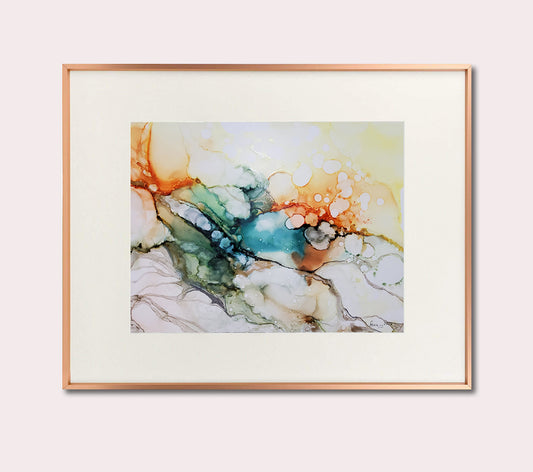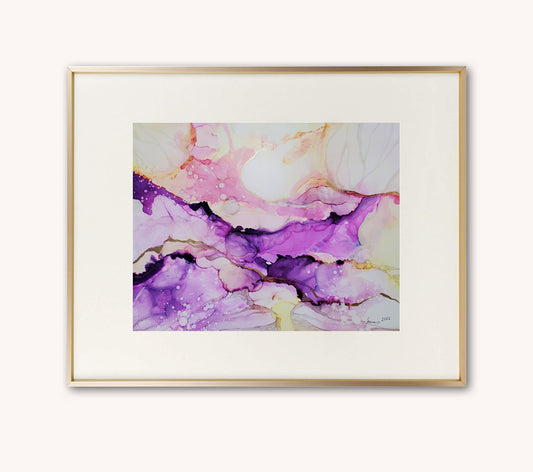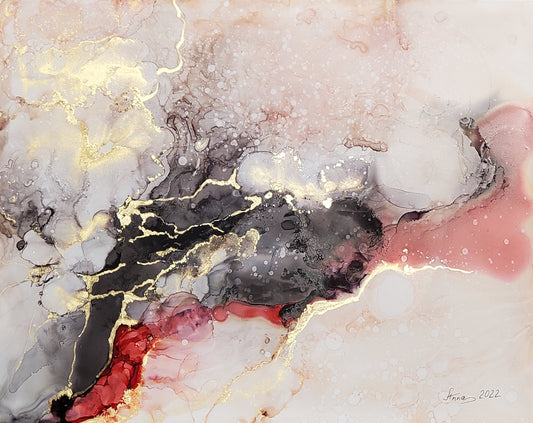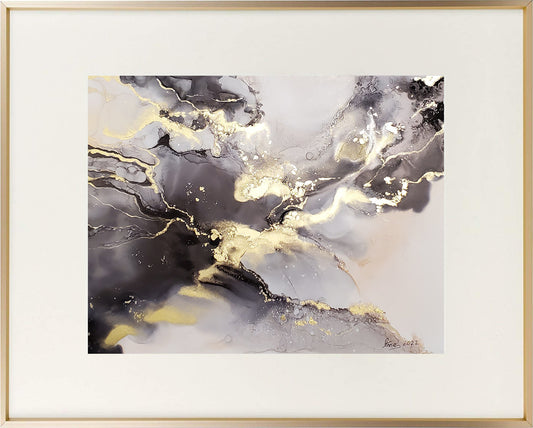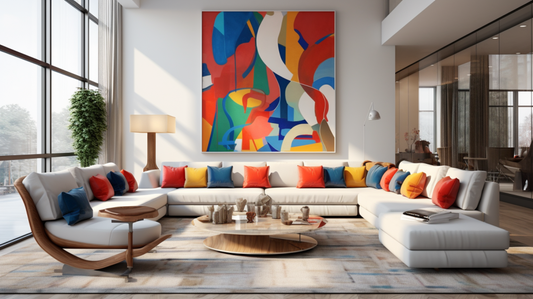
Abstract art is a realm of boundless creativity where artists explore innovative and unconventional ways to convey their thoughts, emotions, and perceptions. One of the most captivating and enduring themes within abstract art is biomorphism, an approach that takes inspiration from organic and natural forms to create abstract compositions. This artistic movement has deep roots in the early 20th century and continues to inspire artists today. In this article, we will delve into the world of biomorphism, exploring how organic and natural forms have ignited the imaginations of abstract artists and uncovering the symbolism hidden within these shapes.
The Genesis of Biomorphism
To fully grasp the significance of biomorphism in the realm of abstract art, we must first examine its origins. The term "biomorphism" was popularized in the early 20th century and is often associated with artists such as Jean Arp, Henry Moore, and Joan Miró, who sought to break away from the rigid constraints of representational art and delve into a more instinctual and organic realm. These artists were reacting to the upheaval of their time, with the traumatic aftermath of World War I and the emergence of new technologies, such as the machine and the mechanized world, causing a desire for a return to the organic and natural.

Jean Arp, a pioneer of biomorphism, once remarked, "I want to perceive the world, the universe and the forces that fill the universe. I want to perceive and to understand more profoundly the world, different elements, trees, and rocks." This quote encapsulates the fundamental essence of biomorphism—a desire to connect with the natural world on a deeper, more profound level, and to extract its quintessential forms and shapes.
The Aesthetic Appeal of Biomorphism
Biomorphic art captivates the viewer with its aesthetic appeal, evoking feelings of wonder and enchantment. It bridges the gap between the observable world and the realm of the subconscious, offering viewers an opportunity to explore the unfamiliar and the fantastical. The utilization of organic and natural forms in abstract art allows for the creation of compositions that are both harmonious and enigmatic.
One of the most iconic examples of biomorphism is the work of the Spanish surrealist painter, Joan Miró. Miró's art is a testament to his fascination with the shapes and symbols found in the natural world. His renowned painting, "The Birth of the World, is a prime example. In this masterpiece, he incorporates biomorphic elements like irregular, flowing shapes and symbols inspired by plants and animals. This amalgamation of forms draws viewers into a world of abstraction, one that is brimming with visual intrigue and organic symbolism.

Symbolism in Biomorphism
Biomorphism is not merely an exploration of form and shape; it is also rich in symbolism. Organic and natural forms carry inherent meanings and associations that can be deeply embedded in the artworks. These symbols often transcend cultural and linguistic boundaries, speaking to our shared human experiences.
The use of biomorphic elements in art allows for the communication of ideas and emotions that might be challenging to convey through traditional representational means. These forms can evoke a range of emotions, from tranquility and serenity to tension and chaos. For instance, the sinuous and flowing forms of a biomorphic composition might evoke a sense of fluidity and calm, while jagged and fractured shapes may elicit feelings of dissonance and anxiety.
Take, for example, the paintings of Yves Tanguy, a prominent surrealist artist. His work is replete with biomorphic forms that appear otherworldly, even extraterrestrial. These forms often resemble fantastical organisms or alien landscapes. In Tanguy's art, the biomorphic shapes serve as a gateway to the subconscious, allowing viewers to delve into the mysterious depths of the mind. This subconscious exploration can unveil profound and often universal symbolism that transcends the individual artist's intentions.

The Relationship Between Biomorphism and Nature
At its core, biomorphism is a celebration of nature's beauty and complexity. Abstract artists who employ biomorphic elements frequently draw from the natural world, utilizing the forms, patterns, and textures found in flora, fauna, and geological formations. The marriage of these elements with abstraction transforms the art into a powerful visual language.
An exemplary artist in this context is Henry Moore, renowned for his sculptures inspired by natural forms. Moore's work often features the sleek, curvilinear shapes of reclining figures that seamlessly blend with the landscape. His piece "Reclining Figure" (1951), for instance, harmoniously integrates the human form with the contours of the earth. This integration not only reveals the artist's reverence for the human body but also symbolizes the profound connection between humanity and the natural world.

In Moore's sculptures, the use of biomorphism is evident in the way the contours of the figure resemble the natural shapes and textures of rocks and hills. This fusion of human and natural forms symbolizes the inseparable relationship between mankind and the environment. It communicates the idea that we are inextricably linked to nature, and that the human body itself is a reflection of the earth's organic beauty.
The Therapeutic Aspect of Biomorphism
Biomorphic art has a therapeutic quality that resonates with viewers on a profound level. The use of organic and natural forms can evoke a sense of calm, serenity, and connectedness with the natural world. This therapeutic aspect is particularly evident in abstract art therapy, where biomorphism is often used to help individuals explore their emotions, find solace, and gain insights into their inner selves.
Biomorphic art's therapeutic potential is well illustrated in the work of Wassily Kandinsky, a pioneer of abstract art. Kandinsky's "Composition VII" (1913) is a mesmerizing example of how biomorphic shapes and forms can elicit deep emotional responses. The swirling, organic shapes in this composition create a sense of movement and energy, which can be both invigorating and calming. The use of biomorphism in Kandinsky's work allows viewers to immerse themselves in a realm of pure emotion, unburdened by the constraints of the tangible world.

This therapeutic quality of biomorphic art has led to its adoption in various forms of art therapy. For instance, individuals struggling with stress or trauma may find solace in creating or engaging with biomorphic artworks, as they offer a safe and non-representational space for self-expression and healing.
Biomorphism's Enduring Legacy
Biomorphism has left an indelible mark on the world of abstract art, and its legacy continues to influence contemporary artists. The enduring appeal of biomorphism lies in its ability to bridge the gap between the abstract and the concrete, the conscious and the subconscious, and the human and the natural. Its capacity to convey complex emotions and universal symbolism through organic and natural forms remains as potent today as it was in the early 20th century.
An artist who has embraced biomorphism in the modern era is the renowned Japanese contemporary artist Yayoi Kusama. Her signature polka-dotted pumpkins, such as "Pumpkin (L)," exemplify the timeless allure of biomorphism. These sculptures, reminiscent of whimsical pumpkins, are adorned with Kusama's signature dots, which give them an otherworldly, almost cosmic quality. Kusama's work fuses natural forms with abstraction, creating an enticing visual language that resonates with viewers on both an emotional and symbolic level.

In Kusama's art, the pumpkin represents both the human and the natural, a symbol of life, growth, and fertility. The biomorphic elements in her work elicit feelings of joy and wonder, and the repetition of dots adds a sense of infinity and boundlessness. Kusama's pumpkins, like the biomorphic artworks of the past, speak to our shared human experience and our connection to the organic world.
Conclusion
Biomorphism in abstract art is a captivating and enduring movement that draws inspiration from the organic and natural forms found in the world around us. The artists who employ biomorphic elements in their work create compositions that are both aesthetically captivating and deeply symbolic. These forms serve as a gateway to the subconscious, allowing viewers to explore emotions, ideas, and universal symbolism that transcend cultural boundaries.
The therapeutic aspect of biomorphism is also significant, as it provides a means of finding solace and healing through abstract art. The use of organic and natural forms in art therapy enables individuals to connect with their emotions and inner selves in a non-representational and safe space.
The enduring legacy of biomorphism is a testament to its ability to bridge the gap between the abstract and the tangible, the conscious and the subconscious, and the human and the natural. Contemporary artists, such as Yayoi Kusama, continue to draw from the rich well of biomorphic inspiration to create art that resonates with viewers on both an emotional and symbolic level. As biomorphism persists in the ever-evolving world of abstract art, it serves as a reminder of our profound connection to the natural world and the enduring power of organic and natural forms in artistic expression.
Intrigued by the fascinating world of abstract art? Your artistic journey doesn't have to end here. Explore a mesmerizing collection of captivating and modern abstract artworks by visiting our Abstract Art Collection and Shop. Our gallery is a treasure trove of creativity, where you can not only see but also acquire unique pieces that resonate with your aesthetic sensibilities. Dive into a realm of imagination, emotion, and innovation as you discover the transformative power of abstract art. Don't miss the opportunity to enrich your surroundings with these thought-provoking creations. Start your exploration now and let the art on this page inspire your soul.


